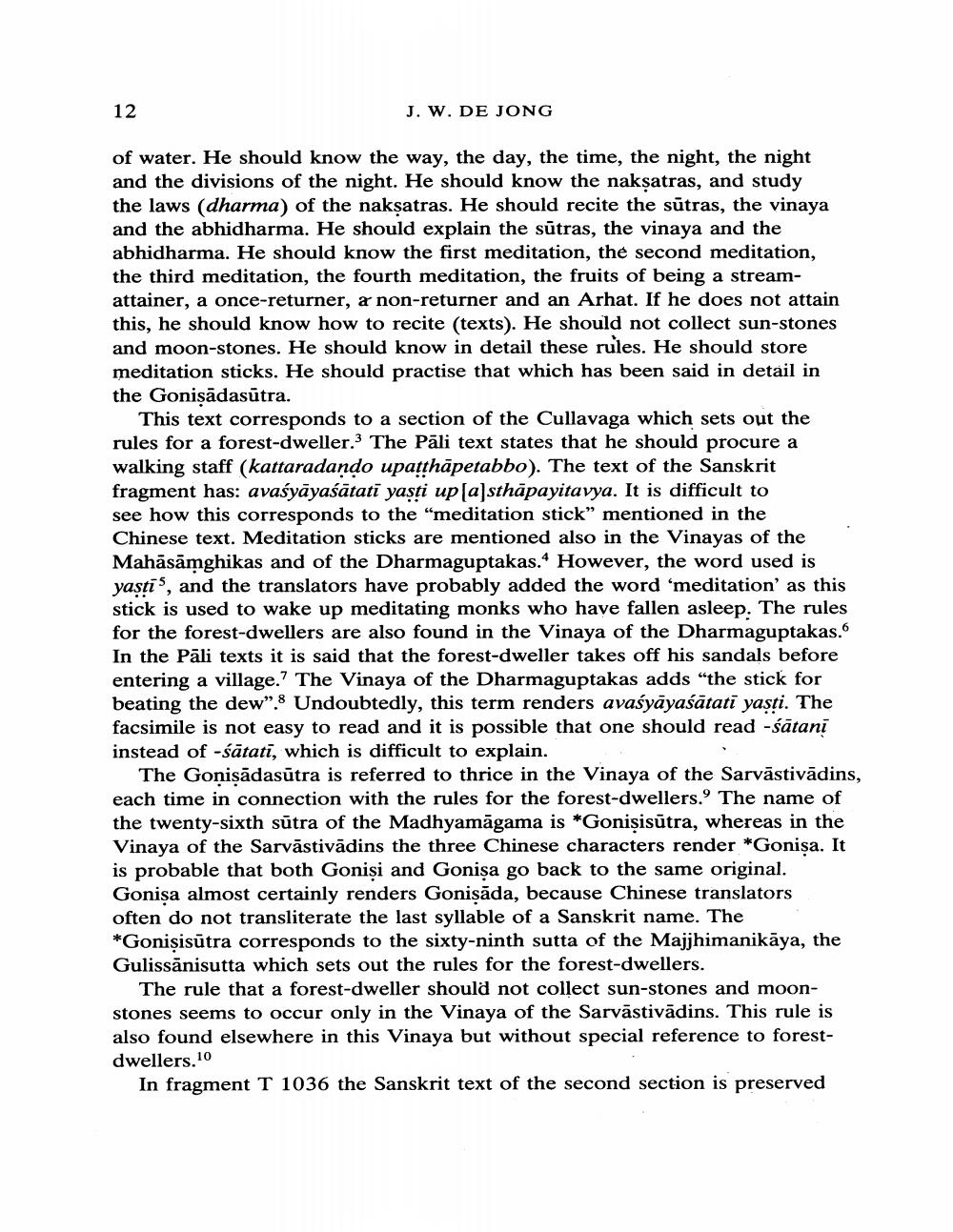Book Title: Three Sanskrit Fragments Of Vinaya Of Sarvastivadins Author(s): J W De Jong Publisher: J W De Jong View full book textPage 2
________________ 12 J. W. DE JONG of water. He should know the way, the day, the time, the night, the night and the divisions of the night. He should know the naksatras, and study the laws (dharma) of the naksatras. He should recite the sūtras, the vinaya and the abhidharma. He should explain the sūtras, the vinaya and the abhidharma. He should know the first meditation, the second meditation, the third meditation, the fourth meditation, the fruits of being a streamattainer, a once-returner, a non-returner and an Arhat. If he does not attain this, he should know how to recite (texts). He should not collect sun-stones and moon-stones. He should know in detail these rules. He should store meditation sticks. He should practise that which has been said in detail in the Gonisādasūtra. This text corresponds to a section of the Cullavaga which sets out the rules for a forest-dweller.3 The Pāli text states that he should procure a walking staff (kattaradando upatthāpetabbo). The text of the Sanskrit fragment has: avasyāyaśātati yasti up[a]sthāpayitavya. It is difficult to see how this corresponds to the “meditation stick” mentioned in the Chinese text. Meditation sticks are mentioned also in the Vinayas of the Mahāsāmghikas and of the Dharmaguptakas. However, the word used is yasti", and the translators have probably added the word 'meditation' as this stick is used to wake up meditating monks who have fallen asleep. The rules for the forest-dwellers are also found in the Vinaya of the Dharmaguptakas. In the Pāli texts it is said that the forest-dweller takes off his sandals before entering a village.? The Vinaya of the Dharmaguptakas adds "the stick for beating the dew".8 Undoubtedly, this term renders avaśyāyaśātati yasti. The facsimile is not easy to read and it is possible that one should read -śātani instead of -śātati, which is difficult to explain. The Gonisādasūtra is referred to thrice in the Vinaya of the Sarvāstivādins, each time in connection with the rules for the forest-dwellers. The name of the twenty-sixth sūtra of the Madhyamāgama is *Gonişisūtra, whereas in the Vinaya of the Sarvāstivādins the three Chinese characters render *Gonişa. It is probable that both Gonisi and Gonisa go back to the same original. Gonișa almost certainly renders Gonisāda, because Chinese translators often do not transliterate the last syllable of a Sanskrit name. The *Gonisisūtra corresponds to the sixty-ninth sutta of the Majjhimanikāya, the Gulissānisutta which sets out the rules for the forest-dwellers. The rule that a forest-dweller should not collect sun-stones and moonstones seems to occur only in the Vinaya of the Sarvāstivādins. This rule is also found elsewhere in this Vinaya but without special reference to forestdwellers. 10 In fragment T 1036 the Sanskrit text of the second section is preservedPage Navigation
1 2 3 4 5 6
